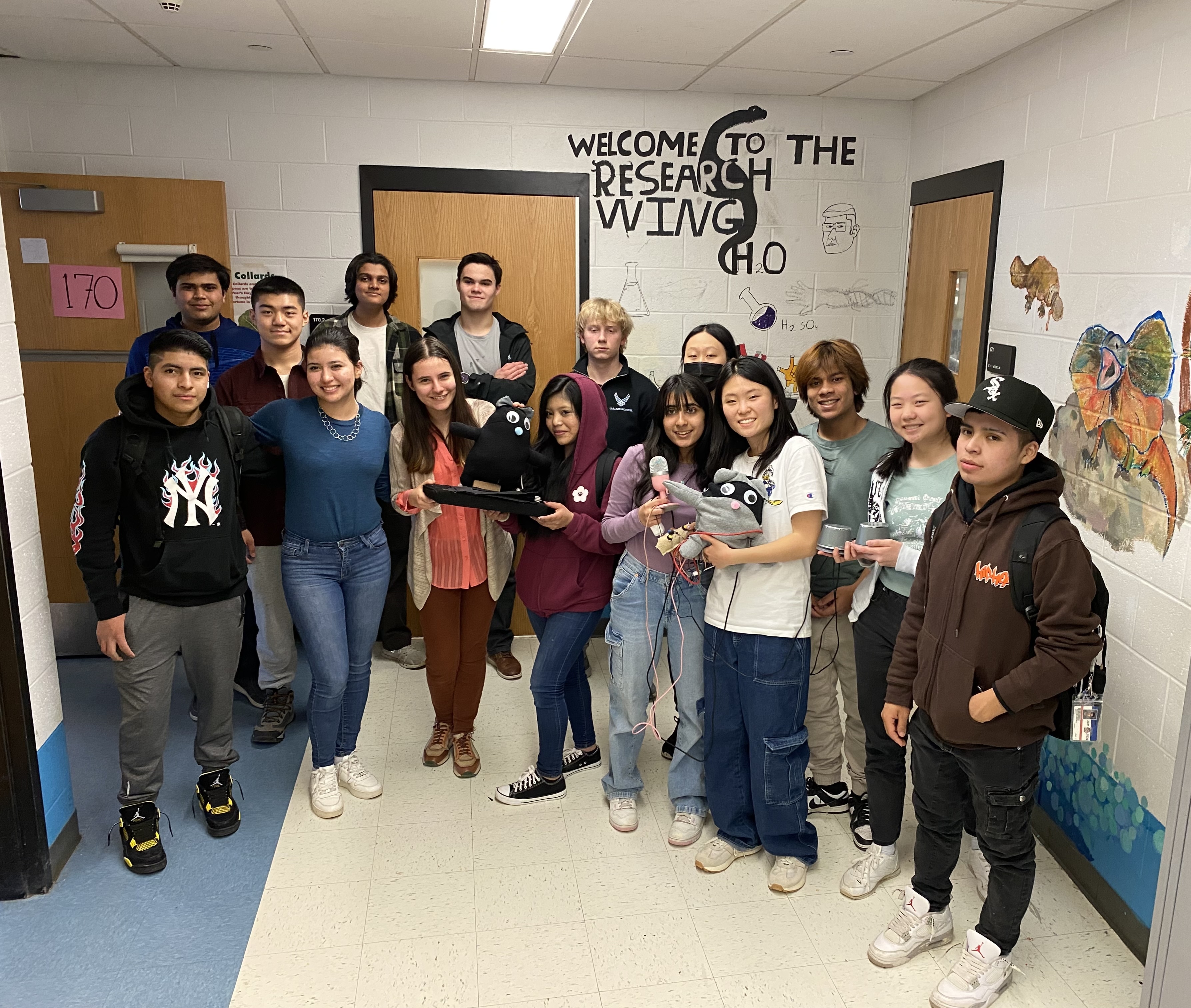PHS wins states in Samsung Solve for Tomorrow competition
February, 2024
PHS’s research team has been selected as the New Jersey State Winner in the 2023-2024 Samsung Solve for Tomorrow competition, which grants more than $100,000 in Samsung equipment and classroom resources to schools across the country for developing solutions to major global issues.
The research team was first selected as one of 300 State Finalists back in January, winning a total of $2,500 in funding for their solution to diminish the number of speakers of endangered languages around the world, specifically Haitian Creole and Mam, an indigenous language of Guatemala. Now State Winners, the team has received $12,000 worth of Samsung technology and resources and is preparing for the National Finals in which ten of the fifty schools will be selected to win a total of $50,000 in funding.
“I think we can start a movement to actually preserve indigenous languages and really call attention to it,” said PHS science teacher Mark Eastburn, the team’s mentor. “We’re actually going to bring a spotlight to a topic that really is one of the major biodiversity crises in the world. We’re living organisms, and we’re losing so much culture when we lose language.”
In developing a robot programmed with databases for various languages that were constructed in-house, the team’s goal is to teach endangered languages to people who don’t have access to an actual speaker of the language, and for young native speakers to continue practicing in their language. A stuffed armadillo, the national animal of Guatemala, was chosen for the first appearance of the robot.
Targeted in large part towards children, the stuffed animal robot can communicate in the specified language and can interact through the pressing of buttons, which are specifically colored so that colorblind users can still use the robot. So far, the PHS students have created a prototype that can hold conversations in Haitian Creole and are working on one for Mam, as well.
“We aim for these to be implemented in schools so that kids can [learn the language] from a young age and spread it generationally,” said Hayah Mian ’25, a member of the psychology team. “We want to bring these languages back to life by preserving them from a young age and teaching the language to others who want to learn it.”
Additionally, the team intends for the stuffed animal robot to help decrease anxiety around practicing an endangered language.
“If you’re talking to a stuffed animal, it’s not going to judge you, so you could practice or learn a language without the stress of being judged by another person,” said Eastburn. “We think this is going to be, at least psychologically, helpful in overcoming the barrier of hesitancy to speak.”
Due to the multidisciplinary nature of the project, creating the robot has required coordination across teams of students working on programming, robotics, psychology, as well as language speakers.
“We have a large team of really talented people working together … There is so much overlap, and effective communication has been key to combining all these areas of knowledge … We’ve learned so much from each other, and we’ve expanded what we originally thought we were going to do. This was something we never thought possible last year,” said Mian.
However, the team’s progress has not been without challenges, especially with finding speakers of endangered languages to collaborate with.
“Many people who speak Mam or Creole have been discouraged from speaking these languages because they are seen as lower class or lower social status languages. Because there is a stigma around speaking an endangered language, many people are afraid to speak it, so we have had trouble collecting data,” said Sofia Son ’25, a member of the programming team.
The subsequent round of selection in the Samsung competition is at the national level, so the team is working to complete the prototypes of the robots, as well as to further expand their outreach, so that they can present them at the competition and to various news sources, including Town Topics and NPR. They plan to test the effectiveness of the robots on aiding language learning by testing them in ESL classrooms at PHS, before eventually sending the robots around the world. This will mean making the technology affordable to anyone.
“We want to make this something that is accessible to socioeconomic levels across the spectrum, for people who may not have had a formal education,” said Eastburn. “We’ve brought the price down [to] … probably less than $30 a robot. … The real challenge is we’re going to have to figure out how to make those technical skills, some of which are very daunting and intimidating, accessible to everyone so that everyone can feel empowered to take charge of building these robots and hopefully create a movement that will grow to become much bigger than us.”